2024-4-10
在加拿大最早的 New Brunswick 博物馆里,看到下面这一张照片。照片的主人,是一个端坐了裹着小脚带着耳环的中国大妈,膝盖上抱着一个欧洲男孩。这张像应该是在照相馆或者展销会上摆拍的,大妈未必一定是小男孩的保姆。
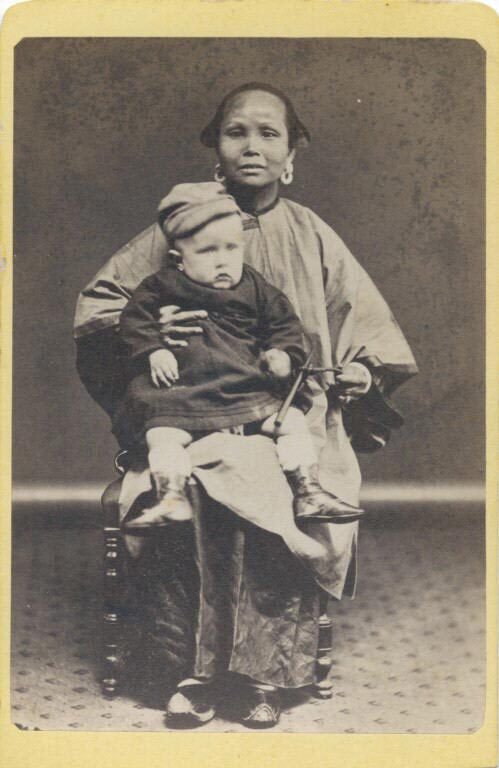
博物馆的注释说明是,不知道这个女子姓甚名谁(Perkins Child and an Unidentified Chinese Woman),可是有下面一些附注:
A. Fong
Chinese
c 1865
albumen print carte-de-visite
10 cm x 6 cm
Collection of the New Brunswick Museum (1989.113.14)
于是便想起,前不久刚看过的那本《中国女人梅阿芳》(The Chinese Lady, A Fong Moy)来:
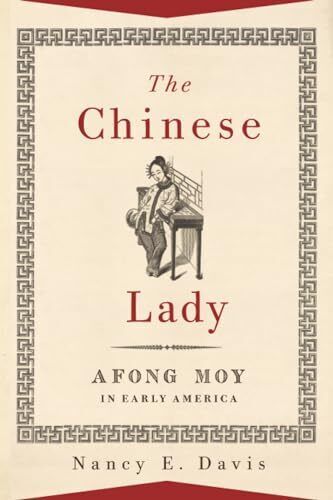
梅阿芳者,中国女人,十九岁,身高四英尺十英寸,鞋长四英寸,不知何地人也,1834年12月入境美国。看一看,五毛钱。和阿芳一起入境的,还有一位名叫阿童的精明的少年翻译。
于是就有了下面这个被杜撰了的故事:
In 1834 Afong Moy was the first recognized Chinese woman to arrive in America. Through the course of her travels across the country, she became the first Chinese person to receive wide public acclaim and national recognition. While her fame was short-lived, she introduced Americans to China through her person and the goods she promoted.
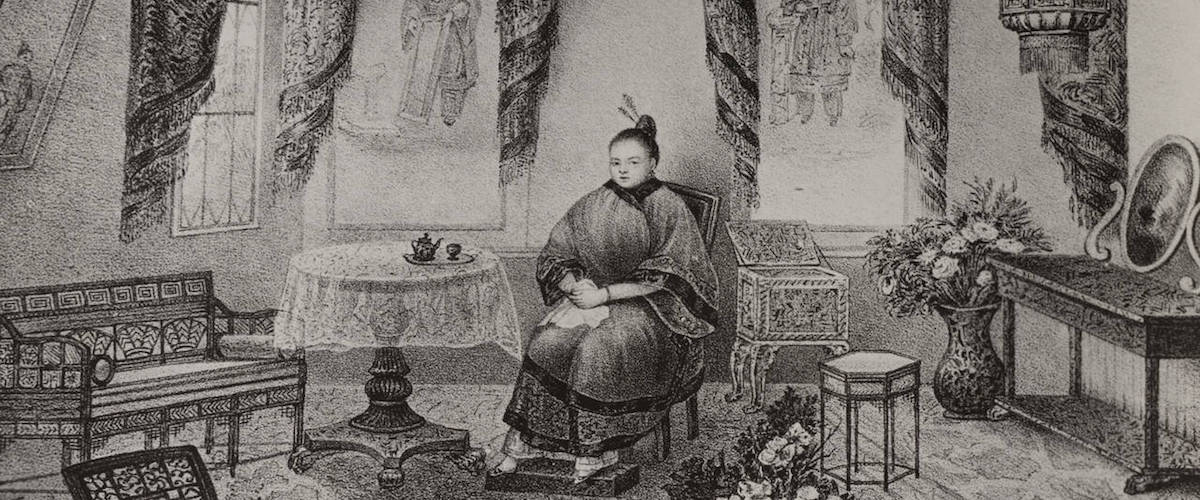
During the 17 years of Afong Moy’s visible presence in America, her treatment as a Chinese woman varied over time. When she first arrived, the public generally responded to China in a positive way. On the edge of patrician orientalism, the perceived Orient was one of exoticism, beauty, dignity, and revered history. The Carnes merchants, Francis and Nathaniel G., and the ship captain Benjamin Obear, who brought Afong Moy to America, took advantage of this perception, using the sensual stimulus that came from marketing China trade goods with an exotic. They played on, controlled, and mediated the public’s consciousness of her visual difference—her bound feet, Chinese clothing, and accessories—all to promote their goods.
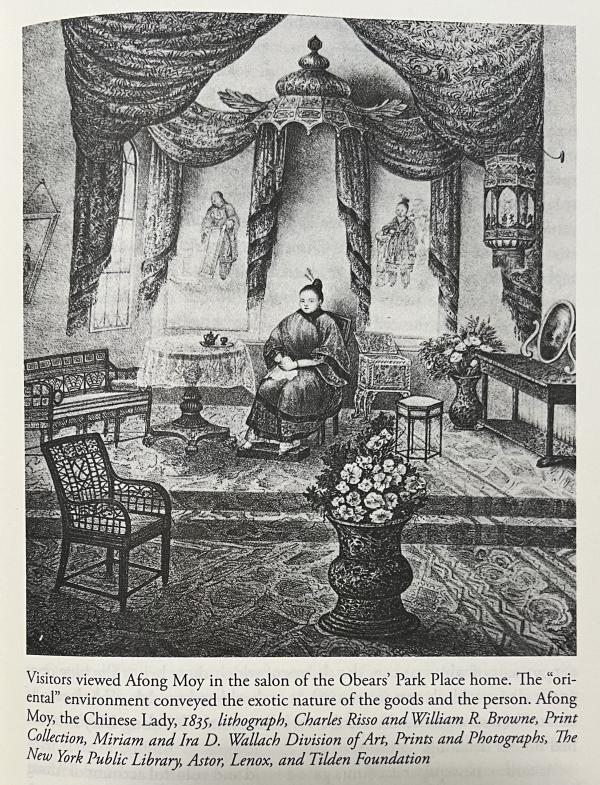
In the second phase of her experience in the later 1830s, Afong Moy made a transition from a promoter of goods to that of spectacle. During this time, she experienced the conjoining of two worlds—that of the market and the theater. Afong Moy operated simultaneously as entertainment, edification, and billboard. Her new manager occasionally set her against a panoramic backdrop of an illusionistic oriental scene, thus highlighting her cultural exceptionality through her clothing, objects, and images.
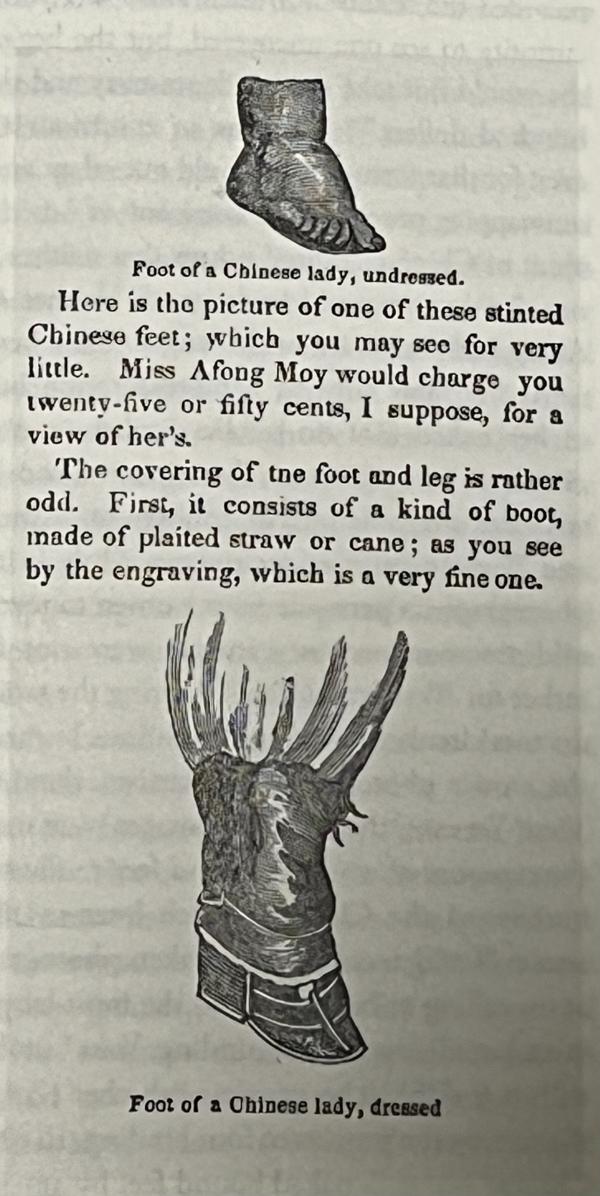
After a heart-rending, eight-year interregnum out of the public eye, Afong Moy once again took to the stage in the late 1840s and early 1850s. P. T. Barnum, the master marketer of difference, became her manager. He recognized her promotional value as the only Chinese woman in America whose bound feet, clothing, objects, and experience signified an orientalist presence that might titillate the American public. Afong Moy’s time in America provided an additional benefit to Barnum: she no longer needed an interlocutor. Though occasionally she required an interpreter, her language skills were likely sufficient for most audience interactions. On stage she provided evidences of her dissimilarity from the use of chopsticks to the demonstration and explication of Chinese religious rituals.
于是我认为,最前面博物馆里的那一张照片,就是梅阿芳在1851年第二次复出的时候给拍照的,时年三十六岁,这也是目前在博物馆里所能看到的梅阿芳的唯一的照片。而且在这时候,一个更年轻的17岁的中国女孩,潘亦可(Pwan Ye Koo),也被带进了美国和公众的视野。
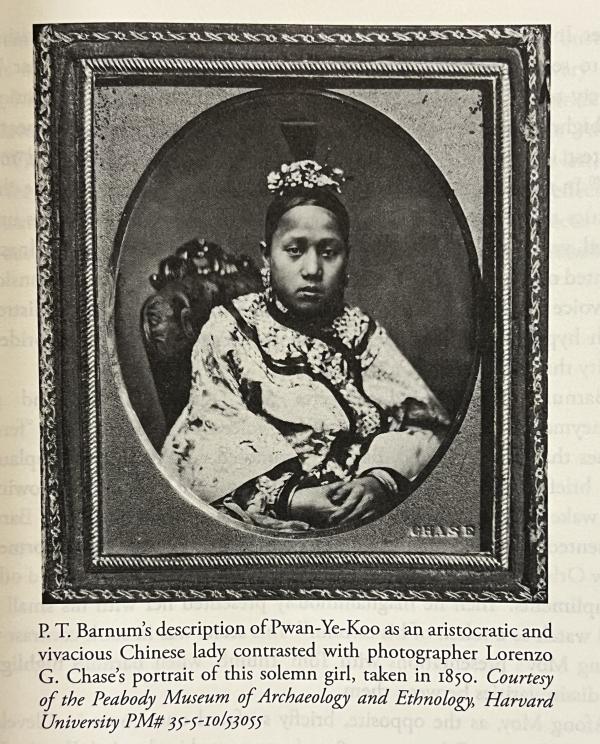
潘亦可的可贵之处,也是她的杀手锏,是她的小脚,只有两寸半,比三寸金莲,还三寸金莲!
而且和潘亦可在一起的,也不是她一人,而是一个完整的团队。有翻译、女佣、教师爷、和一男一女两个孩子。于是,梅阿芳就很快失去了市场,隐姓埋名不为人知了。

如果真如附注中所说,照片拍于1865年左右,梅阿芳50岁。年老色衰,也是正常的。
|
